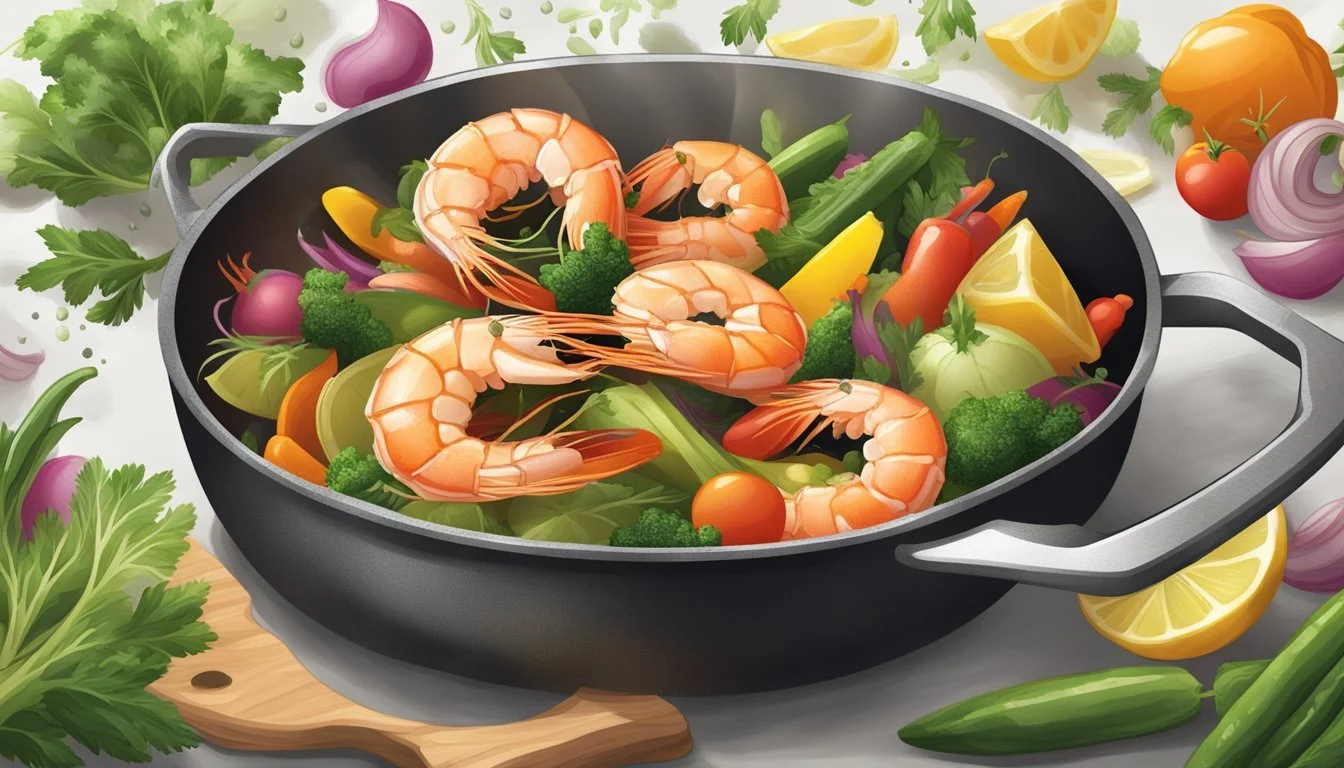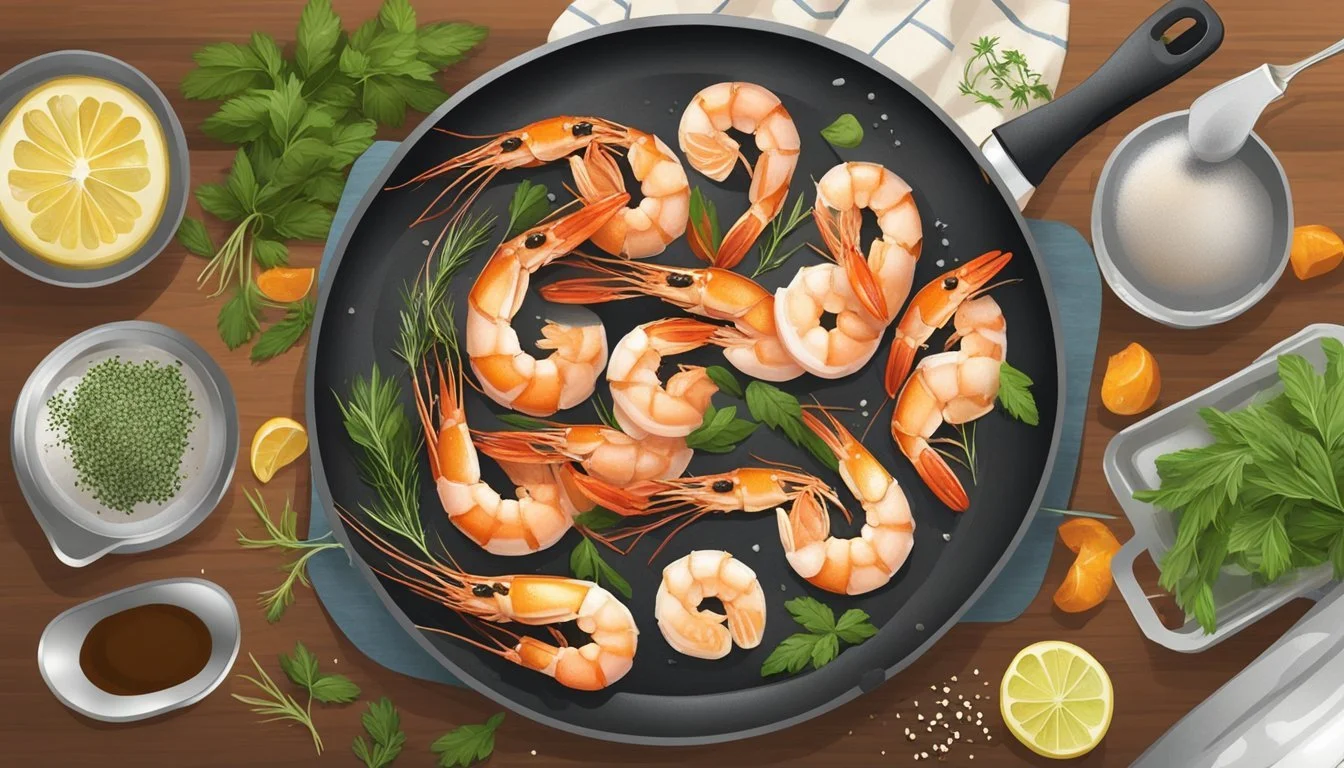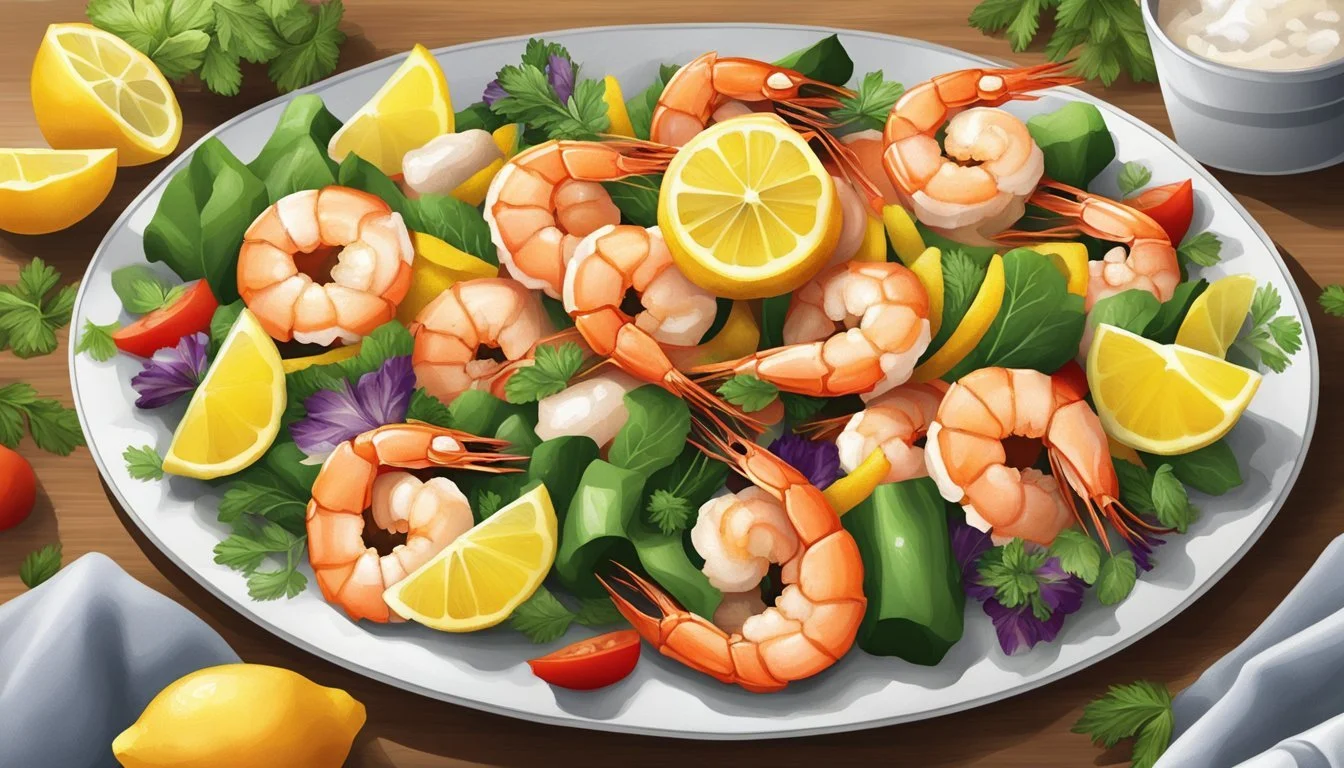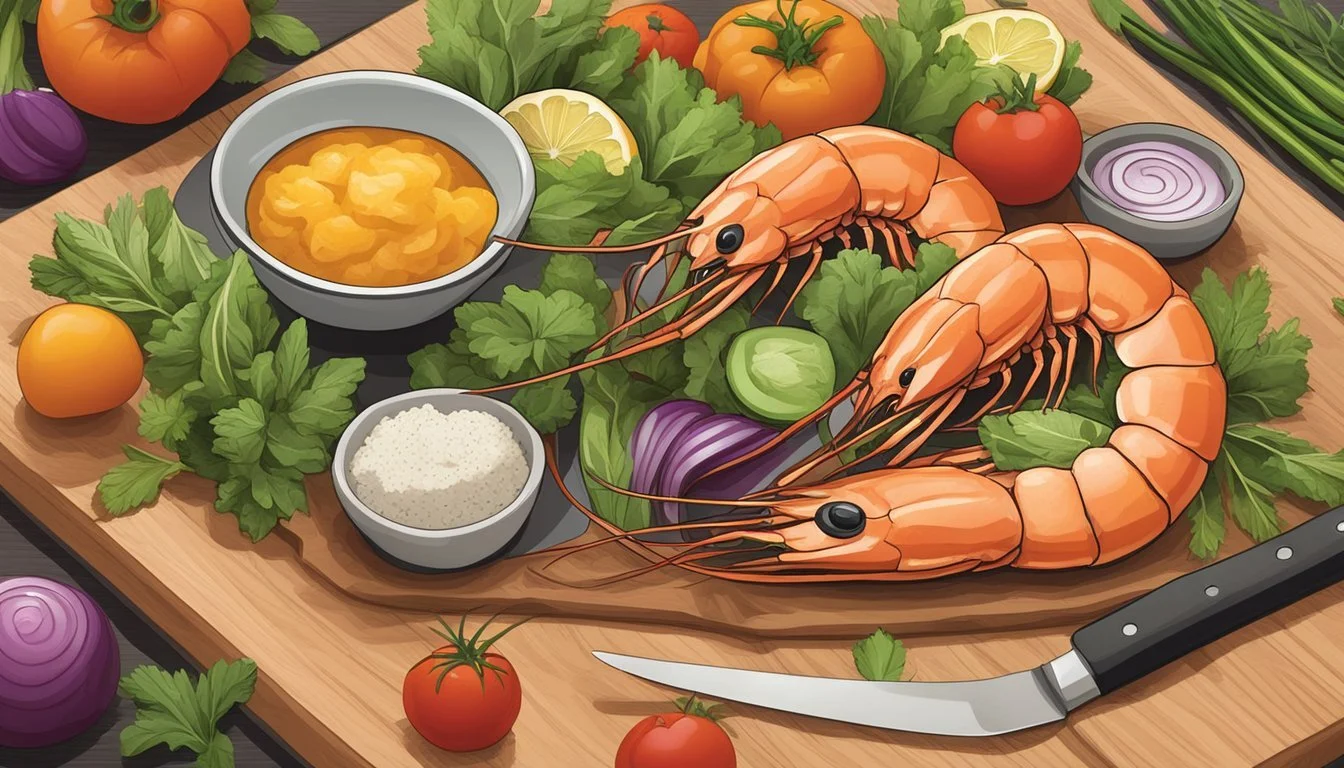How to Cook with Jumbo Shrimp
Crafting Impressive Entrees with Ease
Jumbo shrimp (What wine goes well with shrimp?) make a grand statement on the dinner plate, offering both a visual feast and robust flavors that can transform any meal into an impressive entrée. Their generous size not only lends well to a variety of cooking methods but also allows for the shrimp to absorb marinades and seasonings thoroughly, enhancing their natural succulence. Whether served as a main dish or as part of a larger spread, jumbo shrimp are versatile and can be prepared quickly.
Cooking these large crustaceans requires attention to detail to preserve their delicate texture and keep them from becoming rubbery. Grilling over medium heat lets the shrimp develop a slightly smoky flavor while maintaining moisture, whereas sautéing in olive oil or butter gives them a rich, golden exterior and a tender bite. Baking offers a hands-off approach, delivering a dish that is both elegant and flavorful with minimal prep time.
Suitable for an array of cuisines and presentations, jumbo shrimp can be the centerpiece of a gourmet meal or a casual backyard gathering. Whether experimenting with bold spices and herbs or keeping it simple with garlic and lemon, chefs can rely on this seafood (What wine goes well with seafood?) to elevate their culinary creations. Pairing with complementary sides and sauces can bring out the best in jumbo shrimp, turning every meal into an occasion.
Choosing Your Ingredients
To ensure the success of your entree with jumbo shrimp, the selection and preparation of ingredients are pivotal. The following insights will guide you in creating a dish that is both impressive and delicious.
Selecting Quality Jumbo Shrimp
When it comes to jumbo shrimp, look for specimens that are firm, have a translucent appearance, and emit a fresh, sea-like scent. Avoid any shrimp with signs of discoloration, sliminess, or a strong ammonia smell, as these are indicators of spoilage. Fresh seafood markets or the fresh-fish section of your grocery store are the best sources.
Preparation of Shrimp: Thawing and Deveining
Before cooking, if your jumbo shrimp are frozen, they must first be properly thawed in the refrigerator overnight or under cold running water. Once thawed, inspect each shrimp and devein by making a shallow cut along the back and removing the dark vein. For aesthetic and culinary reasons, you might also choose to peel the shrimp, though some recipes may call for shell-on.
Essential Seasonings and Spices
A marinade of olive oil, garlic or garlic powder, lemon juice, salt, and pepper is typically sufficient to bring out the natural flavors of the shrimp. Here's a simple combination:
2 tablespoons olive oil
1 tablespoon lemon juice
1 teaspoon garlic powder
1/2 teaspoon salt
1/4 teaspoon black pepper
Whisk these ingredients together to coat your shrimp evenly.
Complementary Side Ingredients
Pair your seasoned jumbo shrimp with complementary sides that will enhance the dish. Consider tossing them with pasta or alongside a rice dish. A fresh salad with a variety of greens could accompany the shrimp to balance the meal. For garnishment, a sprinkle of freshly chopped parsley adds both flavor and a pop of color.
Preparation Techniques
Cooking with jumbo shrimp turns an ordinary meal into a standout dish, given the proper preparation techniques are employed. Mastering the art of deveining, peeling, seasoning, and pre-cooking prep ensures that the shrimp not only taste great but are also presentable.
Ensuring Proper Deveining and Peeling
Jumbo shrimp must be thoroughly deveined and peeled before cooking to guarantee a pleasant texture and taste. The process generally involves:
Deveining: Running a small knife along the back of the shrimp to remove the dark vein.
Peeling: Gently pulling off the shell from the body. One may choose to leave the tail on for presentation.
Prep Time Tip: Set aside ample time for this step as meticulous deveining and peeling can significantly elevate the final dish.
Seasoning Your Shrimp Perfectly
Seasoning jumbo shrimp is crucial as it infuses them with flavors that complement their natural taste. Consider the following guidelines:
Use fresh herbs and spices like garlic, paprika, and lemon zest for a vibrant taste profile.
Marinades should be well-balanced, favoring ingredients such as olive oil or butter for richness.
The shrimp's flavor is largely dependent on the seasoning, so it's worth investing time to perfect this prep step.
Pre-Cooking Shrimp Prep Steps
Preliminary preparations before cooking jumbo shrimp can consist of the following actions:
Patting dry: Ensuring shrimp are dry helps them sear properly when grilled or sautéed.
Bringing to room temperature: This helps achieve even cooking when using high-heat methods.
Remember, spending a few moments on pre-cooking preparations can drastically enhance the texture and consistency of the cooked shrimp.
Cooking Methods
Jumbo shrimp can transform a simple dish into an impressive entrée with the right cooking method. Each technique brings out unique flavors and textures, perfectly complementing the delicate taste of large shrimp.
Mastering the Art of Sautéing Shrimp
Sautéing shrimp is a quick method to infuse flavor while achieving a slightly crisp exterior. It involves frying the shrimp in a small amount of fat, typically unsalted butter or olive oil, over medium-high heat. The key is to cook the shrimp in a single layer and flip them after 2-3 minutes to ensure even cooking and a golden appearance without overcooking. Lemon juice can be added near the end for a bright finish.
Baking Jumbo Shrimp
Baking is a hassle-free method ensuring evenly cooked shrimp with minimal attention. To bake jumbo shrimp:
Preheat the oven to 400°F (200°C).
Toss the shrimp with olive oil, salt, lemon juice, and optional seasonings like garlic.
Arrange them in a single layer on a lined baking sheet.
Bake for 10 minutes or until the internal temperature reaches 145°F (63°C).
Garnish with Parmesan or fresh herbs before serving.
Baked jumbo shrimp emerge succulent and are ideal for a less hands-on approach.
Grilling Techniques for Juicy Shrimp
Grilling jumbo shrimp imparts a smoky flavor and an inviting char. To grill jumbo shrimp:
Marinate the shrimp if desired.
Preheat the grill to medium heat.
Place shrimp on skewers or a grilling basket to avoid losing any to the flames.
Grill for 2-3 minutes per side, watching for a pink and opaque color as a sign of doneness.
Drizzle with lemon juice during the final minutes for added zest.
Allowing the shrimp to pick up the grill's heat without overcooking is crucial for juicy, grilled jumbo shrimp.
Boiling Shrimp to Perfection
Boiling shrimp is a straightforward method for tender shrimp whether eaten alone or added to other dishes. To boil jumbo shrimp, one should:
Bring a pot of salted water to a rolling boil.
Add the shrimp and reduce heat to medium.
Boil for 3 minutes until the shrimp are pink and opaque.
Transfer shrimp to an ice bath to halt cooking.
Properly boiled shrimp should be cooled promptly in an airtight container if not served immediately.
Flavor Enhancements and Garnishes
Flavor enhancements and garnishes play a pivotal role in elevating the taste of jumbo shrimp dishes. They add depth, richness, and a burst of freshness that complements the seafood's delicate flavor.
Creating Aromatic Garlic Sauce
One can never go wrong with a classic aromatic garlic sauce. It infuses jumbo shrimp with a warm essence that is both comforting and sophisticated. To create this sauce:
Ingredients:
Garlic cloves: finely minced
Butter: unsalted for controlled seasoning
Red pepper flakes: a pinch for heat
Parsley: freshly chopped for color and taste
Method:
Melt butter in a saucepan over medium heat.
Add garlic and red pepper flakes, cooking until the garlic is fragrant but not browned.
Stir in parsley for a fresh finish.
Lemon and Herbs for Freshness
Lemon and herbs offer a refreshing twist to the somber richness of shrimp. The brightness of lemon, coupled with the herbaceous notes of parsley, can bring a dish to life:
Lemon: serve with lemon wedges for a zesty spritz
Parsley: incorporate chopped parsley for a fresh, green vibrancy
Suggestions:
Squeeze lemon over the cooked shrimp just before serving.
Sprinkle with parsley to enhance the shrimp's visual appeal.
Utilizing Butter and Olive Oil
Butter and olive oil are quintessential for adding succulence to jumbo shrimp. They provide the base for sauces, aid in cooking, and carry flavors beautifully:
Butter: rich and creamy for sautéing or baking
Extra Virgin Olive Oil: fruity and robust, ideal for marinating or dressing
Tips:
Use butter in the final stage of cooking to prevent burning.
Drizzle olive oil over shrimp before serving to add a layer of flavor and sheen.
Serving and Presentation
Impressive jumbo shrimp entrees demand not only perfect preparation but also thoughtful presentation. The visual appeal of shrimp can elevate a dish from satisfactory to extraordinary, underscoring the importance of plating techniques and well-chosen garnishes.
Plating Techniques for Entrees
For an elegant presentation, one can opt to fan out the jumbo shrimp around the rim of the plate, with tails converging towards the center—creating a starburst effect that showcases the shrimp's size and shape. Highlighting the entree's focal point, chefs may place the shrimp atop a mound of seasoned rice or creamy polenta to add height and depth to the dish. A drizzle of sauce on the plate, applied with precision, can give a pop of color and an indication of the flavor profile.
Pairing with Sides and Garnishes
Sides:
Mashed potatoes: Mashed potatoes provide a creamy base that complements the firm texture of jumbo shrimp.
Grilled or roasted veggies: Offering both color and nutrition, a variety of seasonal vegetables intensifies the meal's visual appeal.
Garnishes:
Garnish Effect on Dish Fresh parsley Adds color and a fresh, herbaceous note. Lemon zest Brings a bright, citrus aroma to the palate. Edible flowers Contributes elegance and a subtle floral flavor.
Choosing side dishes and garnishes that resonate with the cuisine and course of the meal not only enhances the flavor but also the overall dining experience. For instance, a sprinkle of fresh herbs or a few capers (What wine goes well with capers?) can embolden the natural taste of the shrimp without overwhelming it. Similarly, a light, citrusy garnish like lemon zest can cut through the richness and refresh the palate between bites.
Special Considerations
When preparing jumbo shrimp dishes, one must consider dietary needs and the best practices for storing and reheating leftovers to maintain quality.
Adjusting for Dietary Restrictions
Gluten-Free Options: Individuals adhering to gluten-free diets can replace standard breading ingredients with alternatives such as almond flour or crushed gluten-free crackers.
Low Carb Choices: For those on low carb diets, jumbo shrimp can be enjoyed grilled, sautéed, or baked without heavy sauces or breading.
Storage and Reheating Leftovers
Storing Cooked Shrimp: Leftover jumbo shrimp should be stored in an airtight container and refrigerated within two hours of cooking. Proper storage ensures freshness for up to three days.
Reheating: To best preserve their texture, reheat shrimp gently, avoiding the microwave which can make them rubbery. A quick sauté or oven reheating is preferable:
Method Temperature Time Sauté Medium 1-2 minutes Oven 275°F 10-15 minutes
Meal Prep Tip: Cooked jumbo shrimp can be incorporated into meal prep plans. Separate into portioned containers for easy reheating.
Nutritional Information
Jumbo shrimp are a popular choice for entrees due to their large size and savory flavor. Beyond their culinary appeal, they offer beneficial nutritional value that may be a positive addition to any diet.
Protein: Shrimp are an excellent source of protein, providing approximately 24 grams per 100 grams of shrimp. This high-quality protein helps in muscle building and repair and is vital for overall body functions.
Calories: Shrimp are low in calories, with a 100-gram serving containing roughly 99 calories. This makes them an ideal option for individuals who are managing their calorie intake while still aiming for a nutrient-dense diet.
Nutritional values are usually determined for cooked, peeled shrimp. Here is a brief breakdown of the nutritional content per 100 grams of cooked jumbo shrimp:
Nutrient Amount Calories 99 kcal Protein 24 g Total Fat 0.3 g Carbohydrates 0.2 g
Minerals and Vitamins: Shrimp are also a source of essential minerals and vitamins. They contain notable amounts of selenium, an antioxidant that plays a key role in maintaining a healthy immune system. Additionally, they offer other minerals such as phosphorus, zinc, and magnesium.
When considering shrimp in a diet, it is important to note that they are high in cholesterol. However, current dietary guidelines suggest that the cholesterol found in food has a lesser effect on blood cholesterol than previously thought.
In summary, jumbo shrimp provide a high protein, low calorie addition to meals, making them suitable for a range of dietary needs, with a nutritional profile that supports health and wellness.






